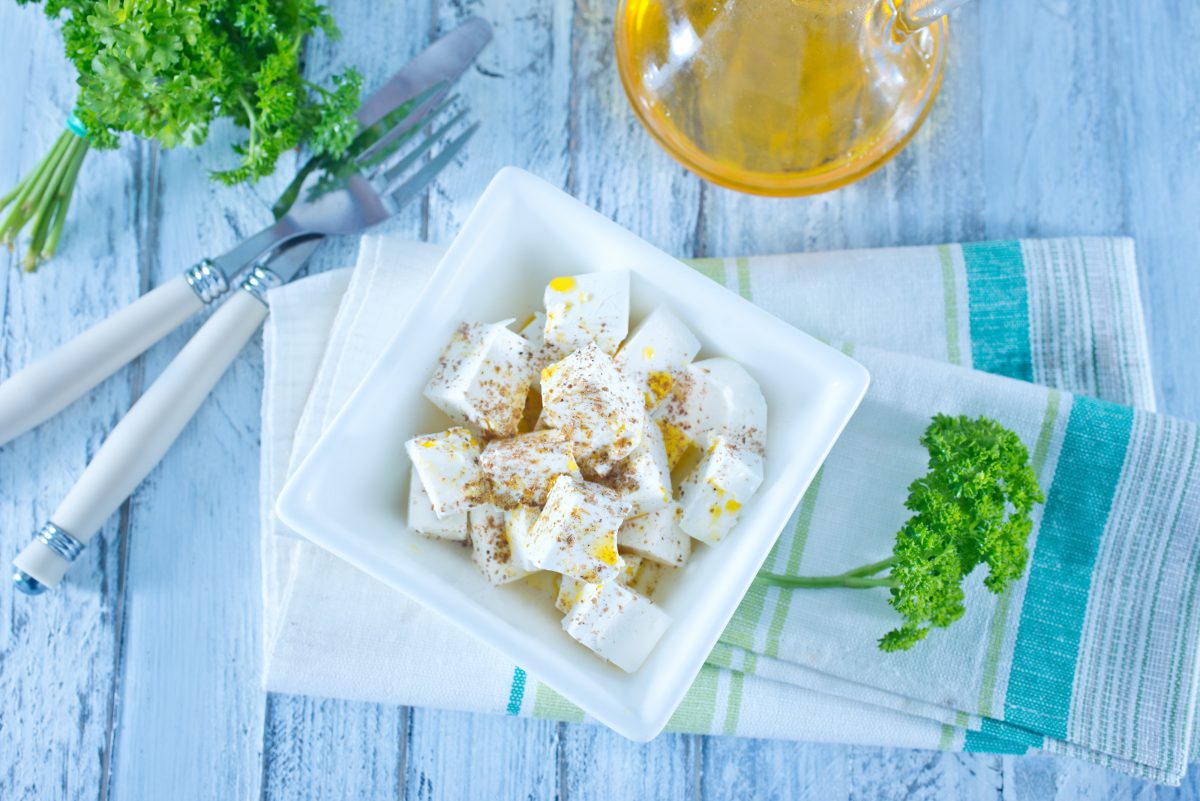
Life beyond Feta – get to know Arabic white cheeses
Can you tell the difference between Feta and Akkawi? Or Shanklish and Nabulsi? We put together an abundant Arabic cheese board for you. Use any of these cheeses described here, in the place of Feta in your summer dishes.

Labneh is probably the most known of the Arabic cheeses. If you’re into tart and sour, yet creamy flavours, there’s no hope for you. Just surrender and buy Labneh every time you go to the supermarket. There are numerous brine and flavour options available at deli counters. My favourite is the one rolled in Za’atar spice mix. Spread a small Za’atar Labneh ball on a cracker, and top with a Jordanian green olive. Oh my!
I originally came acquainted with Shanklish when I was doing research about what people in Lebanon eat around the holiday season at the end of each year. Shanklish came up. There are two types: the fresh, and the aged Shanklish. Traditionally sheep or cow’s milk Shanklish is made from yogurt by-product after butter has been skimmed off. Shanklish is usually flavoured with dry spices such as cumin, coriander, paprika, chili, and black pepper. It’s formed into balls, then rolled in chopped fresh thyme and mint. After this, it’s ready to be eaten (soft), or to be aged (and eaten when hard).
Ackawi is also a wonderful cheese to experiment in the place of Feta. If you like a milder white cheese, this one might be your pick. Ackawi is named after the Aker region of Palestine. The denser type of Palestinian white cheese is called Jibnah baladi, and it’s made from a mixture of goat, cow and sheep milk. The taste of it can be described as slightly sweet, as well as salty. Enjoy either one simply with Arabic flatbread, hummus and other mezes.
Nabulsi is another famous cheese from Palestine. It originates from the town of Nablus. The “real” Nabulsi is a semi-hard or hardened cheese made of sheep’s and goat’s milk, but here in the UAE, we usually only find the soft cow milk version. If the taste is too salty for you, just soak your piece of cheese in water for a few hours or overnight. Try, for example, in filo pastry pies and triangle-shaped, small fattayer pies. Nabulsi is a typical cheese in the traditional sweet Katayef pastry as well.
Egyptians love their Roumy cheese, made from full cream cows’ milk, or from a mixture of cow and buffalo milk. Roumy is a bit different from the Feta type white cheeses, as it is a hard cheese. When you want to experiment on Egyptian soft white cheese, buy a piece of delicious, salty Thalaga.
All of these Arabic cheeses can be crumbled on top of a salad (leafy, grainy, or roasted). Add them to your omelette, frittata, runny sunny side up eggs, or shakshuka as well. Top your Arabic mana’eesh bread, or open sandwiches with them, or fill up your baguettes with them. Use these wonderful cheeses in your pizzas and pie fillings. They are also delicious with sweet treats, such as watermelon, or fig or apricot jam.
